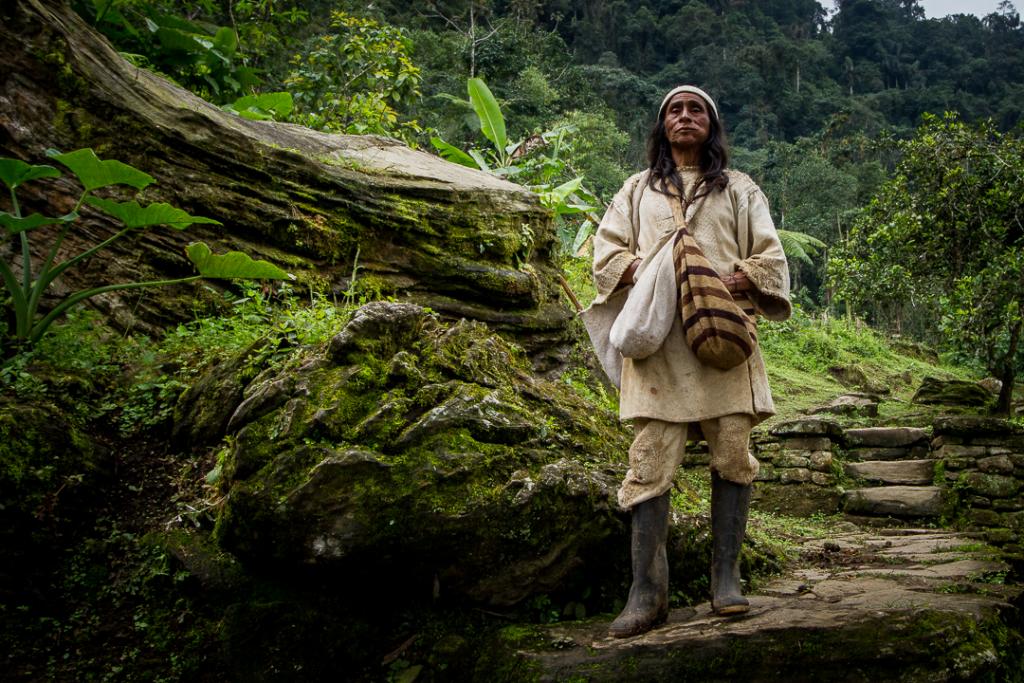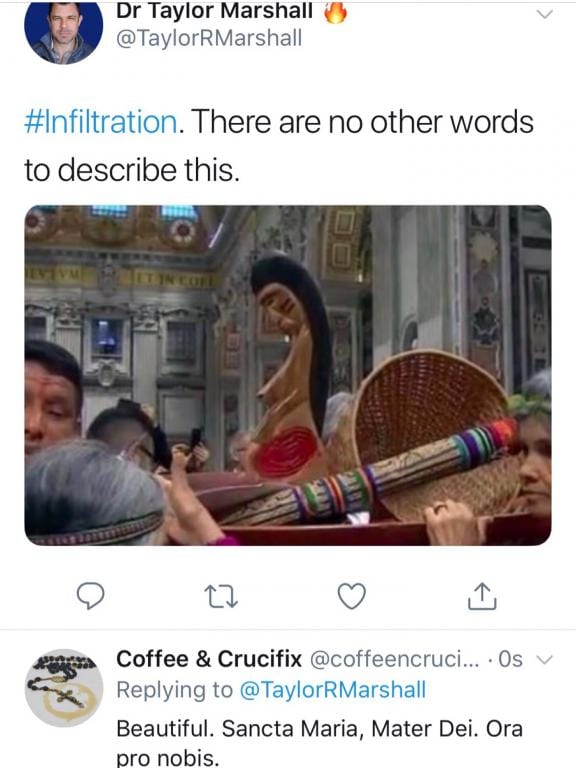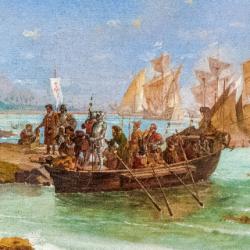
As someone who has spent a significant amount of time in the Evangelical community, it isn’t uncommon to hear flippant comments about Catholicism. Often the main points of contention between Protestants and Catholics are the role of Mary, the meaning of the Eucharist, the means of justification through faith and/versus works and interpretation of Scripture to name a handful. Though an argument that is often brought up by Evangelicals is the notion that the Catholic Church is inherently pagan.
The word ‘pagan’ often makes Christians (especially Catholics) put their guard up. But a common talking point among certain Protestants is that the Catholic Church was created by Emperor Constantine in the 4th century. Of course, this is laughably false; but his dramatic conversion from paganism did lead to Christianity becoming the official religion of the Roman Empire. Many fundamentalists would claim that this is the reason why images of the Virgin Mary and the saints are reminiscent of ancient pagan gods.
Which leads me to ask, what’s so bad about paganism?
According to Wikipedia, the definition is as follows:
Paganism was originally a pejorative and derogatory term for polytheism, implying its inferiority. Paganism has broadly connoted the “religion of the peasantry”. During and after the Middle Ages, the term paganism was applied to any unfamiliar religion, and the term presumed a belief in false god(s).
In spite of the word originally being derogatory, it seems like many modern polytheists embrace the word like a badge of honor (at least in my observation). But it appears the most obvious thing that separates Christianity from the various forms of paganism is between the number of deities they worship. Christians, Jews and Muslims believe in one true God and that their faith descends from Abraham. Christians believe God exists in three persons: the Father, the Son and the Holy Spirit (also known as the Trinity). The Trinity is often mistaken as three separate deities, which is why Jews and Muslims (as monotheistic religions) believe Christianity to be a form of polytheism.
Polytheism comes in many different forms, though for the sake of staying on the topic of the Amazonian Synod I’m going to focus mainly on North American Indigenous culture. In both Christian and Indigenous religious belief, the Earth is viewed as something to be good stewards of. However, the two differ in how the Earth and nature is revered. Christians view the Earth as a created gift and a temporary home, whereas the Indigenous generally belief is that the Earth is a mother of creation and an ultimate source of life — hence the popular name Mother Earth.
I think we can certainly learn from our Indigenous neighbors on how to work together to be better stewards of the Earth and the environment. After all, we breathe the same air and drink water from rivers that are connected to others. However, from a theological standpoint, I think one of the biggest sources of contention between Christians and “pagan” culture is whether they worship the Creator or the created. As Christians, we ought to value our planet as a gift from God, but we certainly don’t worship the Earth.
That being said, I think one of the reasons why there is so much apprehension from the Eurocentric Christian worldview is because race and culture are often assumed to be correlated with religion, even in cases where they shouldn’t be. For example, white people in North America are generally assumed to be of European descent, which many would assume come from some form of Christian tradition. But nowadays, that isn’t always the case since our modern society is becoming more non-religious. This is one of the reasons why I think culture and personal belief shouldn’t be viewed as one and the same.
Case in point: I’m a French Canadian who was raised in the Roman rite of the Catholic Christian faith, though I didn’t always call myself Catholic. There was a 12-year period in my life when I considered myself to be an Evangelical Protestant. But during that time, I still valued my French heritage. I still partook in my hometown’s Fête au Village every year. I still had tourtière every Christmas dinner. But now that I’ve reverted to Catholicism, I’ve rediscovered a sense of my own identity through attending the Tridentine Latin Mass. This is the same Mass that my own parents attended when they were young; and the Mass my grandparents grew up with as well as their own parents before them, and so forth.
When I think about the loss of culture that many Indigenous folk in Canada had experienced over the years, I can’t help but reflect on my own experiences in rediscovering my heritage and realize how privileged I am. I’ve been lucky enough that I had the freedom to briefly walk away from my roots for a time, only to rediscover them without any roadblocks except for my own preconceptions. Many First Nations people in my home country have not been so fortunate.
What comes to mind is when the early European explorers migrated to North America and shared land and culture with the Indigenous people. As more Europeans settled in North America, tensions between cultures became more commonplace. One of the reasons why the residential schools were so controversial was because of the methods of coercion used to forcefully convert Indigenous children to Christianity. For them, this meant adopting a religion that took on a westernized, Romanesque imagery rather than something that was resonant with their culture.
When it comes to Christians evangelizing to other parts of the world, one of the barriers they face is cultural differences. The Jesuits were especially good at using descriptions of God that resonated with the tribes, such as ‘The Great Spirit.‘ Even Christian iconography, an evangelizing tool that was used to communicate stories, was done in the form of Indigenous art in order to share stories from the Bible. Catholic Christianity blended immensely well with the aesthetics of Indigenous tribes with their respect and love for our Creator and nature.
Unfortunately, as far as colonialism is concerned, the negatives tend to overshadow the positives. And the best way to deal with the negatives is to look them straight in their ugly faces.
I think the thought of losing a religious or cultural identity resonates with many conservative Christians, especially when we consider persecution for our faith. If you don’t want your own cultural heritage to be suppressed and wiped out of existence, why would you wish that upon someone else? This calls back to the passage in the Bible about doing unto others as they would do unto you (Matthew 7:12, Luke 6:31). This is one of the reasons why when Native Americans are told to ‘just get over it’ by white people, it cuts deep to the core of their existence. It minimizes the experiences of hardship these people and their families continue to endure to this very day. It would be like someone telling a Jewish person to just get over the Holocaust.
This is what makes the Amazonian Synod at the Vatican so significant. It’s a historically pivotal event where the Church is attempting to reconcile with the Indigenous population of the Pan-Amazon nations for the collective sins of individuals who exploited the land, the resources and the people who live there – thus creating the socioeconomic climate they are left to deal with.
Unfortunately, the positive intentions of the Synod have been drowned out by vocal groups who fear the Church changing disciplines regarding clerical celibacy across the board and being unequally yoked with pagan rituals.
One of the sources of outrage came from images shared on social media of a tree-planting ceremony involving a carving that was mistaken for the goddess of fertility (which was believed to be an Indigenous artistic depiction of the Blessed Virgin Mary). Conveniently enough, the image also appeared to be bare-breasted, which I understand may be taboo in North American purity culture, but certainly does not phase a South American native. There have been many Romanesque depictions of Mary nursing the infant Jesus. Ironically enough, the Tilma of Guadalupe, one of the most iconic images in Catholic culture, happens to depict the Virgin Mary using ancient Aztec imagery.
If the Synod meant Indigenous people adopting an entirely Roman culture and imagery, Western Catholics wouldn’t even be raising any eyebrows. But because it was presented in an art form that resonated with native culture, tensions arose. And sadly enough, many prominent figures in the Catholic community aren’t even attempting to hide their prejudices.

I think it’s important for Christians to realize that not everything to do with pagan culture is inherently bad. It is worth noting that the Early Church prior to Constantine certainly wasn’t Roman. In fact, it was believed at the time to be a fringe movement of Judaism, and counter-cultural in the context of Ancient Rome under Emperor Nero. Aristotle, one of the most well-known philosophers, was an ancient Greek pagan. Yet much of western Christianity’s understanding and interpretation of God and spirituality has been heavily influenced by Aristotle’s view on metaphysics, especially the Catholic understanding of transubstantiation. Pythagoras was an ancient Greek mathematician whose work has shaped western society’s development and progress in science and technology — which also aided in the architectural design and construction of church buildings. I’ll even go as far as to say that clerical vestments have been influenced by ancient Roman culture as well. The habits worn by nuns are reminiscent of clothing worn by vestal virgins in Roman temples. Christmas trees were originally pagan symbols used to honor the Roman god Saturn until they were later adopted by western Christianity as a way of honoring Christ. Even the Latin language itself was originally pagan, but was later adopted as the official unifying language of the Church, and the root of the English language most of us North Americans speak.
Granted this, I think cultures inevitably ‘borrow’ ideas from other intermingling cultures.
While I can understand the reasoning behind the apprehension surrounding the Amazonian Synod, I think much of it is rooted in a fear of the unknown. Anything new or unfamiliar is terrifying; and for many Catholics, this Synod is uncharted territory. I think it’s worth pondering whether or not the hype over ‘pagan idolatry’ is a modern manifestation of deep-seated prejudice thinly veiled as righteous outrage. This certainly does not mean we ought to dismiss the possibility of blurring the lines between Earth-stewardship and Earth-worship, let alone a relativistic approach to Church discipline. But I think if Roman-rite Catholics can get away with consecrating pagan objects into Christianity, I don’t see why the Amazonian Catholics couldn’t experience the same with their own culture as long as it brings glory and honor to Christ.
Admittedly, even I as a white North American have a tendency to view Jesus and Mary through a very European lens, and it can be difficult to fathom that isolated Indigenous people can experience a relationship with Jesus and venerate His Mother by dedicating their culture to them.
But what the constant outrage over the Amazonian Synod communicates is that Indigenous culture is irredeemable and needs to be Romanized. If a pagan Roman culture can experience redemption through Christ, why can’t the Amazonians? Therefore, I think they deserve to know Jesus and Mary in a way that resonates with their cultural identity in the best possible way.












